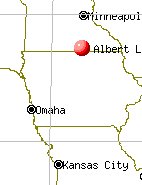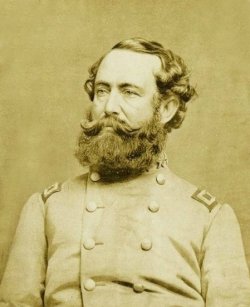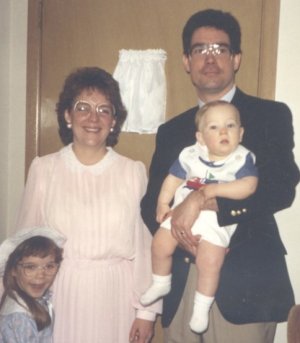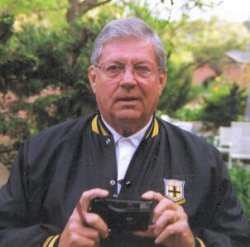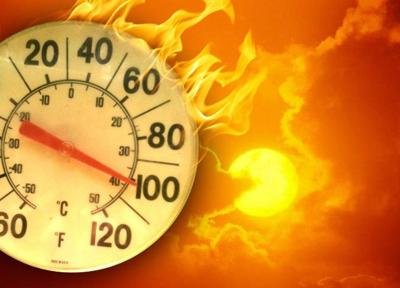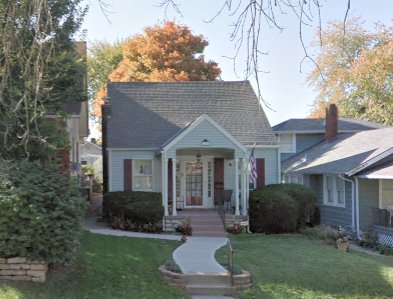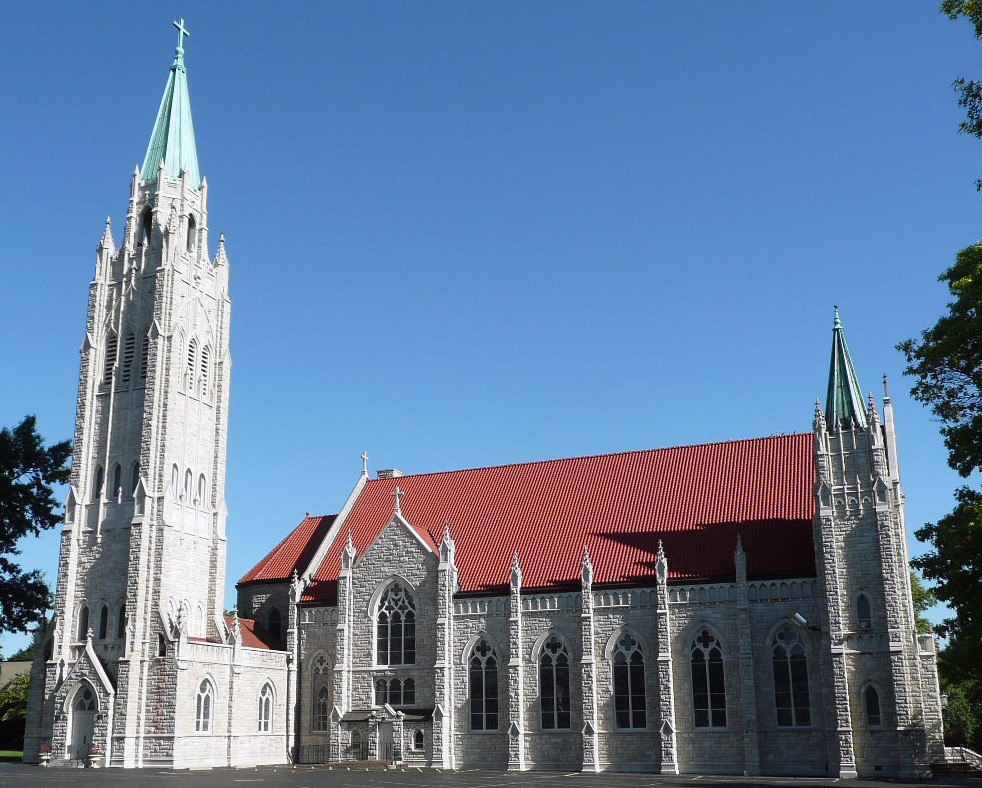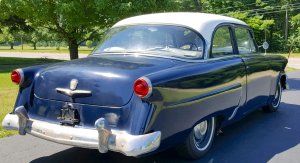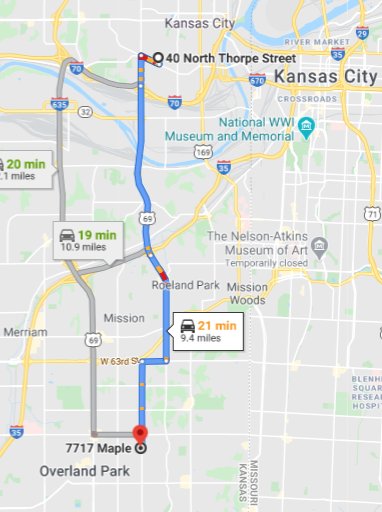My dad’s side of the family. Continue reading
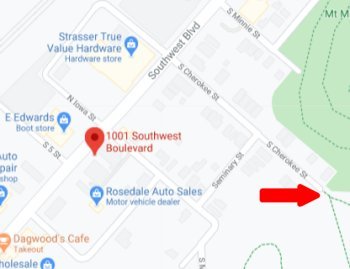
I spent less time in my younger years with my dad’s side of the family. My dad’s parents were Henry and Hazel Wavada. Henry was born in 1884 or 1885; Hazel was born on December 1, 1899. In the early fifties they lived in the house at the end of S. Cherokee St. in the Rosedale section of Kansas City, KS, in which my dad and his two brothers grew up. It was only a few blocks away from Holy Name church. The Ursuline nuns who taught there lived right next to the Wavadas. I remember seeing their wash hanging outside. It was the first time that I internalized the fact that nuns were humans.
We went there a few times, and I can sort of visualize it. I think that the house was yellowish at that time, and it had a porch. You had to walk up steps to get to the porch. I don’t remember the inside much because I was fascinated by the yard. In back was a stone wall about two feet high, and beyond that was an honest-to-goodness woods right in Kansas City, KS.
My best guess is that my granddad died in 1961. He was in his late seventies, but I thought that he must be much younger than that. It never occurred to me that he could be as much as fifteen years older than his wife.
My memories of Henry are scant. I recall that on the one occasion that he fixed breakfast for me he put way too much pepper on the eggs. I can visualize his face, but I cannot picture him doing anything except sitting in a chair.
My guess is that Henry had two brothers and two sisters. For as long as I knew them Mike, Mary, and Helen lived together in a house in KC KS. My parents made it clear to me that I was not named after this Mike, whom my dad considered a layabout. Maybe that is why they called me Mickey. The other brother Vic lived in Nevada (neh VAY dah), MO. I think that we drove down to visit with him once.
I think that both of my grandparents at one time worked in the meat packing industry. Henry might have been a meat inspector.
My dad told me only three anecdotes about his father. He said that his mother would often need to go the tavern and drag him home for dinner. I never saw him drunk, but he was apparently an alcoholic.
The second story concerned Henry’s job. He was apparently offered a big promotion at a time during the depression that the family really needed the money. It would require him to move to Albert Lea, MN. He declined the offer immediately because he was “no g.d. Eskimo”.
The last one involved our family’s legendary mechanical prowess. The (coal?) burner in the basement was on the fritz. Henry got a big wrench and went down to fix it. The next hour or so was filled with curses wafting up from the basement. Then there were repeated loud crashes of metal on metal. Henry came upstairs and sat down. The burner was in shambles.
I know almost nothing about the Wavada family tree, but someone in Spokane has researched it. There are two Wavada enclaves that I know of. One is in Wichita, the other in Spokane. They both pronounce the name WAVE-uh-day. I tell people that the name is probably French. My dad told me that the family came to the U.S. from Alsace via Marseilles.
I know even less about Hazel’s family. Her maiden name was Cox. My dad told me that they were Scots-Irish who had been in America for generations. Grandmom informed me that we were related to Wade Hampton I, II, and III. I also heard that we were related to Mad Anthony Wayne, but I am pretty sure that that was a mixup. In any case if I am ever a guest on Finding Your Roots, Henry Louis Gates Jr. will let me know exactly how many slaves they owned. It was a lot!
We did visit some of Hazel’s relatives once in, I think, Lawrence, KS. I spent most of the time playing with their big dog. I remember that one of the daughters, who was a few years older than I was, showed us a painting that she had done. It just looked like globs of paint, but I make no claim to even average artistic judgment.
When Henry died, Hazel moved to an apartment in KC MO. We went to visit her fairly often. She always had hard candy for the kids and offered us a Coke. Our excitement diminished when we found out that “Coke” actually meant 7-Up. To people in KC “coke” is (or at least was) is a generic word for carbonated soft drink.
She somehow got a dachshund named Tippy. His breeding name was Donnys Perry von Kirsch. She eventually gave him to us.
Hazel did not drive. She liked to come visit us. She would usually persuade my dad to “go snooping”, which meant to drive to specific addresses of people whom she knew in order to see what kind of house they lived in.
My dad informed me long after the fact that when Hazel was in her eighties, she disappeared for a while. My cousin Margaret Anne tracked her down. That is all that I know about this incident.
My dad had two brothers. The oldest brother, Vic, and his wife Margaret lived in Trenton, MO. They had four kids, all younger than I am: Charlie, Margaret Anne (Deaver), Vic Jr., and Cathy (Wisor). I probably spent more time with them at their dad’s funeral in 2009 and my dad’s funeral than I did during the twenty-two years that I lived in Kansas City. I did not know Cathy, who is much younger than I am, at all.
The other brother, whose baptismal name was Henry, was also older than my dad. Everyone called him Joe. He was a Benedictine monk, who monastic name was Fr. Vincent. We all called him Father Joe. He died in 1990.
He was a major influence on my life. You can read more about him in this blog entry.
All three brothers matriculated at Maur Hill, a Benedictine high school in Atchison, KS. This is how my dad explained to me how three boys from Rosedale were able to attend a private high school during the depression. Hazel somehow struck an agreement with the Benedictines that, if one of the boys became a Benedictine priest, the monks would educate all three. Vic got as far as selecting a monastic name (Hildebrand, the birth name of Pope Gregory VII, a canonized saint who led the monastic “reform” movement in its seizure of the papacy in the eleventh century). However, Vic somehow got out of this obligation, and Joe was ordained as a Benedictine priest. I don’t know any more details than that.
My dad worked with Fr. Edwin Watson (who died in 1999) for many years on promotional materials and funding campaigns for Maur Hill. In 2003 Maur Hill merged with Mount St. Scholastica Academy. The new school is called Maur Hill-Mount Academy.
I saw my cousins on very few occasions until I was MUCH older. My dad, who was living in Connecticut by then, and I went to Trenton for my Aunt Margaret’s funeral in 2007 and Uncle Vic’s funeral in 2009. Those occasions have been described here. I got better acquainted with some of them at my dad’s funeral. This blog entry is devoted to that occasion, which took place in suburban Kansas City. Since then I have communicated off and on with Charlie via email.
As far as I know, there has never been a family reunion for the Wavadas or even anything like a party that celebrated anything besides death.


